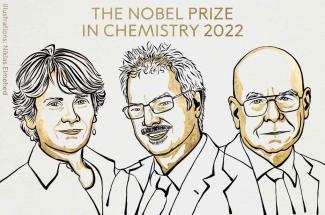21 years later, the Nobel Committee again appreciated his achievements, this time awarding the prize for"the development of clique chemistry and biorthogonal chemistry"(thus Sharpless became the fifth scientist in history to be honoured twice with this prestigious Prize). Its winners were also Carolyn Bertozzi (Stanford University, USA) and Morten Meldal (University of Copenhagen, Denmark). For the second time in a row, the Nobel Committee appreciated simple and elegant synthetic solutions that perfectly fit into the principles of sustainable development. In the justification of the award, it was emphasized that the Winners had created a brilliant tool for building new molecules.
The concept of click chemistry concerns the search and design of perfect reactions that allow for modular connection of simple building blocks in the most effective way. Such reactions should be carried out under mild conditions, without the need to use toxic reagents, be characterized by excellent yields and high selectivity and atomic efficiency, without producing any by-products. Click chemistry is therefore the opposite of many classical chemical transformations that require the use of toxic reagents and generate by-products that are difficult to remove. Sharpless and Meldal independently described the Huisgen cycloaddition between alkynes and azides catalyzed with a copper (I) salt as a transformation meeting the requirements of the click chemistry.
Carolyn Bertozzi joined the two for a reason. It was she who gave the research of Sharpless and Meldal a whole new dimension by applying the concept of click chemistry to living organisms. In her approach, Bertozzi used stressed cycloalkines, thanks to which she was able to exclude the presence of copper ions that are toxic to cells. Bertozzi showed that click responses can be bioorthogonal, meaning that they do not interfere with the normal functioning of the cell. As a result, they can be successfully used to learn about biological processes, track biochemical processes, label and explore the behaviour of cells.
This year's Nobel Prize is certainly remarkable. It shows how important in the modern world are the methods of organic synthesis, allowing the production of new materials and their applications, in particular in biological systems. It has been awarded to organic chemists who are not afraid to take up new challenges and cross borders, working on the border of chemistry and biology.


